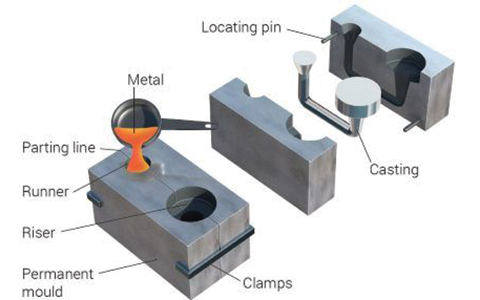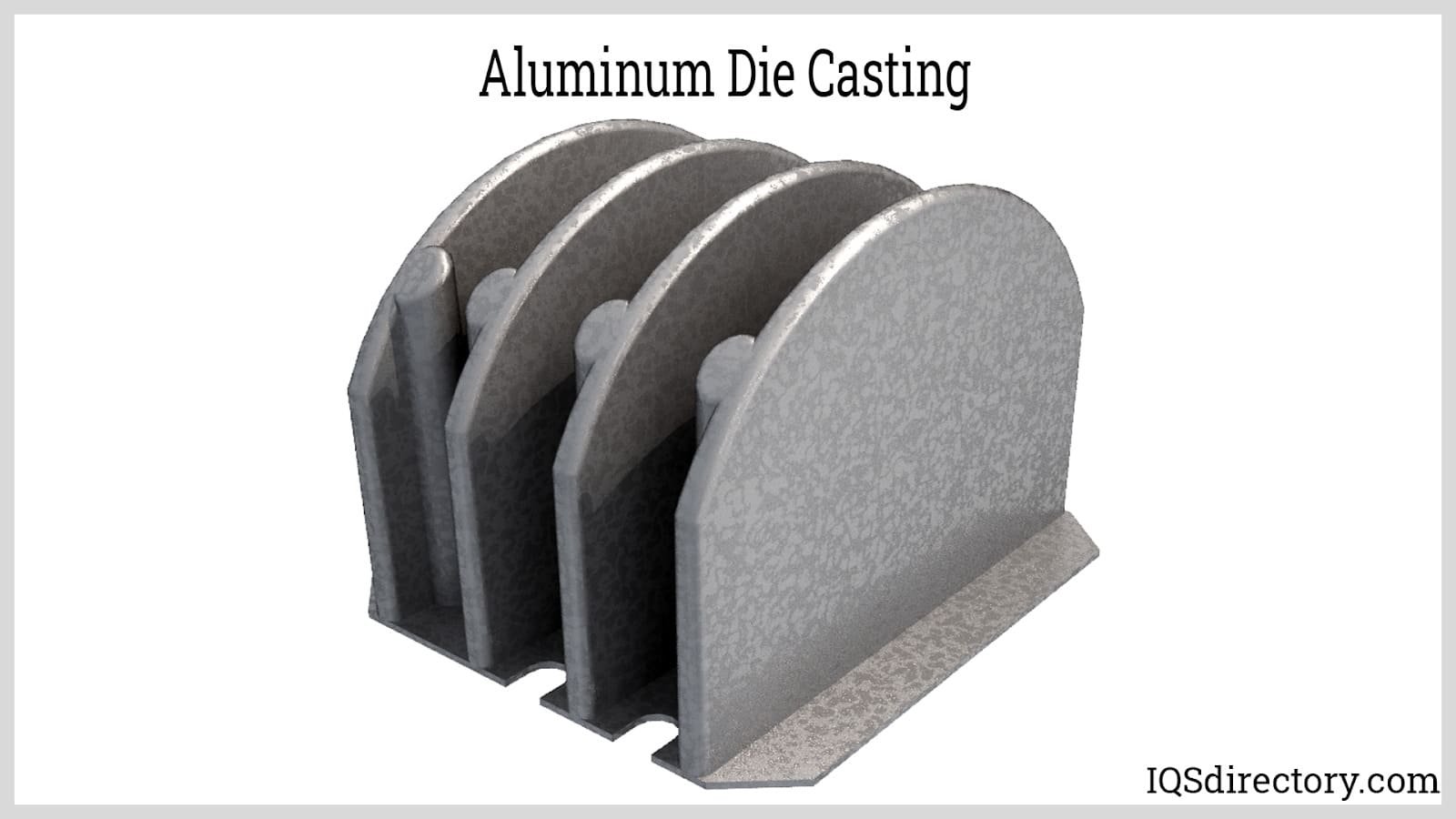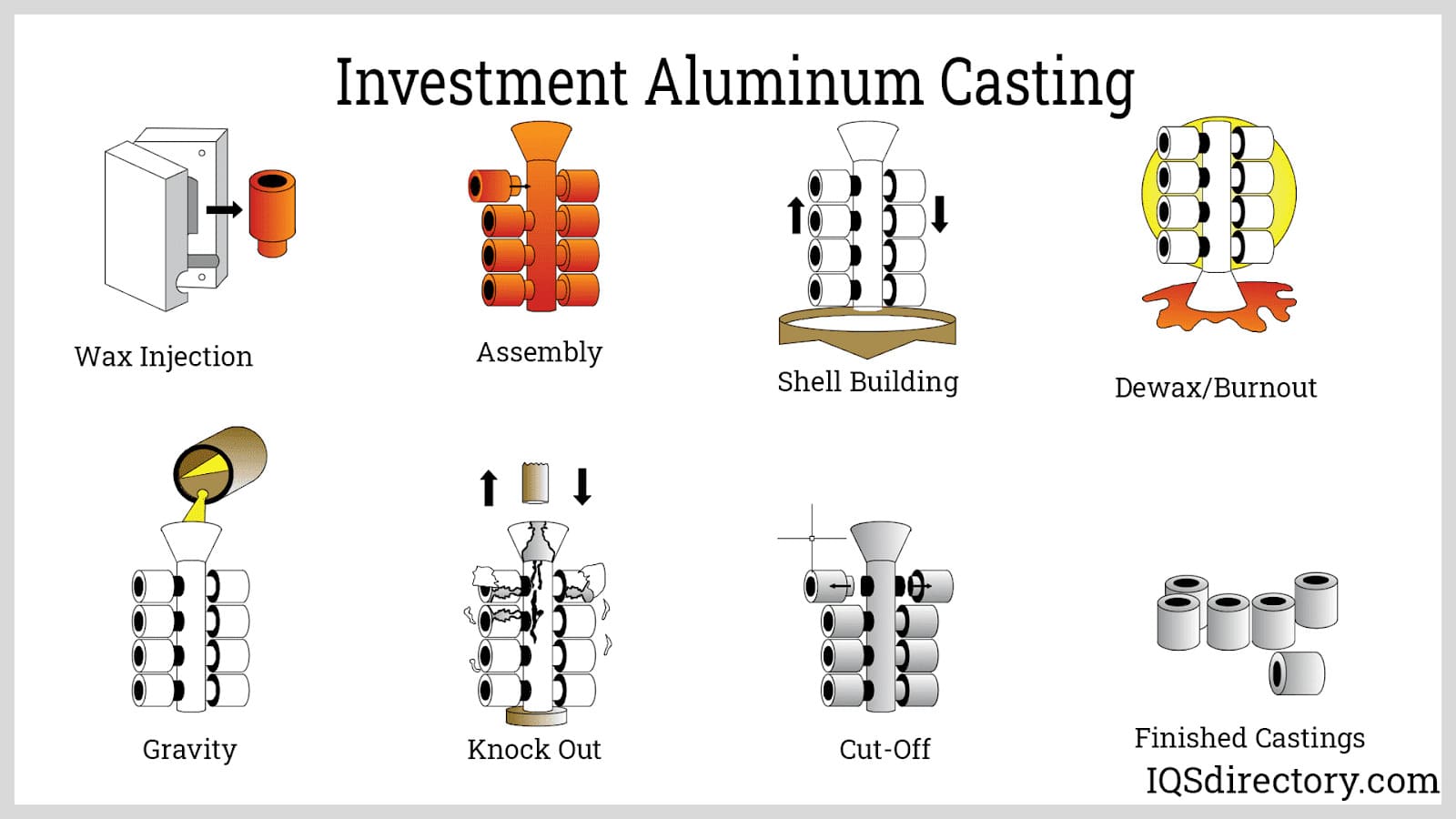Aluminum Foundry guarantees efficiency in aluminum casting production
Wiki Article
Understanding the Various Sorts Of Procedures in An Aluminum Foundry for Reliable Manufacturing
In An Aluminum Foundry, different casting procedures play an essential duty in manufacturing effectiveness. Each approach, from sand casting to die spreading, uses unique benefits that accommodate particular making requirements. Understanding these procedures is crucial for enhancing quality and price. Nevertheless, the selection of casting technique can substantially affect total outcome. As factories discover these options, they have to think about which approaches line up ideal with their manufacturing goals. What elements will ultimately assist their decisions?Introduction of Aluminum Foundry Processes
Aluminum Foundry procedures encompass a collection of specialized strategies targeted at transforming raw Aluminum right into useful components. These processes normally begin with melting the Aluminum, where primary or scrap Aluminum is heated till it reaches a molten state. When melted, the Aluminum might undergo alloying, where certain elements are included in improve its properties, such as strength or corrosion resistance.Adhering to melting and alloying, the Aluminum is put right into mold and mildews to produce wanted shapes. Air conditioning and solidification take place, throughout which the product handles the kind of the mold and mildew. After solidification, castings are gotten rid of and may call for more handling, consisting of cutting, machining, or surface area therapy to achieve the last requirements. Quality assurance is important throughout the procedure, making certain that the created parts fulfill market requirements. Generally, Aluminum Foundry procedures are crucial for producing a variety of resilient and lightweight products utilized in different applications.
Sand Casting Methods
A considerable portion of Aluminum castings are generated making use of sand casting techniques, which is a versatile approach favored for its ability to develop complicated shapes. In this process, a mold and mildew is made from sand blended with a binding agent, guaranteeing it can withstand the molten Aluminum's temperature level. The pattern, normally made of metal or plastic, is positioned in the sand to develop the tooth cavity for the casting. After getting rid of the pattern, the mold and mildew is filled up with molten Aluminum, which solidifies right into the preferred shape upon air conditioning.Sand casting is particularly beneficial for reduced to medium production quantities because of its cost-effectiveness and flexibility. Additionally, it enables simple modifications of mold and mildew designs, accommodating different part geometries. It might not attain the dimensional precision of various other casting approaches, the surface coating can be boosted with succeeding machining. Overall, sand spreading remains a foundation of Aluminum Foundry procedures, making sure diverse applications throughout sectors.
Die Spreading Methods
In the domain of die spreading approaches, two main procedures attract attention: the hot chamber and chilly chamber strategies. Each approach provides distinct benefits and challenges, especially concerning effectiveness and product compatibility. Furthermore, the option of die products plays a crucial role in figuring out the general success and toughness of the spreading procedure.Warm Chamber Process

Cold Chamber Refine
Cold chamber die casting represents an alternate method for generating Aluminum parts, especially when handling metals that have greater melting factors or when the molten steel is also responsive for warm chamber procedures. In this technique, liquified Aluminum is put into the die from an outside ladle, which decreases the threat of contamination and allows for greater adaptability in alloy choice. The procedure includes infusing the liquified metal into a cold die using a hydraulic piston, ensuring specific control over the shot rate and pressure. This method is helpful for generating complicated geometries and accomplishing high dimensional precision. It may call for longer cycle times compared to warm chamber processes, cool chamber pass away casting is vital for particular applications in Aluminum shops.Pass Away Materials Choice
Choosing the proper die products is essential for optimizing the die casting procedure and guaranteeing the longevity and performance of the molds. The most commonly used materials include tool Aluminum, steel, and beryllium-copper alloys, each offering unique advantages. Tool steel is favored for its toughness and resistance to put on, making it ideal for high-volume manufacturing runs. Aluminum gives excellent thermal conductivity, helping with reliable heat dissipation, while beryllium-copper alloys combine toughness and thermal monitoring residential or commercial properties, however at a greater expense. Elements affecting the option consist of the complexity of the part, expected production quantity, and the details Aluminum alloys being cast. Ultimately, the ideal option of die material can greatly enhance performance and lower total operational prices in Aluminum factories.Financial Investment Casting Processes
While numerous casting techniques exist, financial investment spreading attracts attention for its capacity to create complex shapes with high accuracy and exceptional surface area coatings. This procedure involves producing a wax pattern that is coated with a ceramic shell. When the covering hardens, the wax is melted away, leaving a cavity that is filled with molten Aluminum.Investment spreading is specifically advantageous for producing complex geometries that would certainly be tough or difficult to achieve with other methods. It permits limited resistances, decreasing the need for considerable machining post-casting. Furthermore, the smooth surface coating decreases the need for additional procedures, therefore boosting efficiency.
This strategy is widely made use of in industries calling for comprehensive parts, such as aerospace and clinical sectors. The flexibility of investment spreading makes it possible for the production of both huge and small quantities, making it a useful option in Aluminum factories seeking to fulfill diverse production needs.
Irreversible Mold Casting
Irreversible mold spreading is a method that employs recyclable molds to develop Aluminum elements, enhancing efficiency in manufacturing. This method uses a number of advantages, consisting of boosted dimensional accuracy and surface area finish, making it appropriate for various industrial applications. By understanding its procedure, advantages, and uses, one can appreciate its relevance in the Aluminum Foundry industry.Refine Introduction
Aluminum Foundry processes incorporate various methods, one of which is long-term mold and mildew spreading. This method utilizes recyclable mold and mildews, normally made from metal, permitting reliable production of Aluminum components. The procedure starts with preheating the mold to enhance fluidness and reduce flaws. Molten Aluminum is then put right into the mold under gravity or stress, ensuring accurate filling and minimizing air entrapment. When the Aluminum strengthens and cools, the mold is opened up to recover the cast component. Irreversible mold casting is understood for producing premium, dimensionally exact parts appropriate for different applications. The strategy is particularly beneficial for high-volume manufacturing runs, as it considerably reduces material waste and improves repeatability in making procedures.Advantages of Method
Various casting methods exist, permanent mold and mildew casting supplies distinctive advantages that make it a favored selection for lots of makers. This technique permits remarkable dimensional precision and surface area finish, reducing the requirement for comprehensive machining. The multiple-use mold and mildews, typically made from Aluminum Foundry metal, boost production effectiveness by permitting fast cycle times and lower general material costs. Furthermore, long-term mold and mildew spreading advertises improved mechanical residential properties in the end product because of the regulated air conditioning rates, which lead to finer grain frameworks. Furthermore, as the process produces less waste compared to sand spreading, it is more eco friendly. Generally, these advantages add to cost-effectiveness and high-grade outcomes, making irreversible mold casting a strategic choice in the Aluminum Foundry sector.
Applications in Industry
In various markets, irreversible mold spreading plays a necessary duty in creating top notch Aluminum parts, particularly where precision and resilience are paramount - Aluminum Foundry. This approach is commonly used in the vehicle sector for producing engine blocks, transmission housings, and other vital components that need precise tolerances and durable efficiency. Furthermore, the aerospace field take advantage of long-term mold casting for parts that need to hold up against severe conditions while maintaining lightweight attributes. Additionally, durable goods frequently utilize this strategy for generating long lasting and cosmetically pleasing items, such as cookware and decorative components. The ability to attain intricate geometries and fine surface area finishes makes irreversible mold casting a preferred option throughout varied applications, ensuring efficient and reliable production in different commercial contextsMachining and Finishing Procedures
Accuracy machining and completing operations play a necessary function in the Aluminum Foundry procedure, making sure that cast parts fulfill stringent quality and dimensional specifications. These operations include various methods, such as milling, transforming, boring, and grinding, which are used to refine the surfaces of cast components. Each technique is selected based on the particular requirements of the component, including its size, shape, and intended application.Completing processes, such as anodizing and surface sprucing up, enhance the aesthetic charm and deterioration resistance of Aluminum components. Furthermore, these procedures aid attain tighter tolerances and smoother coatings, which are vital for efficiency in different commercial applications.
High Quality Control in Aluminum Foundries
Quality assurance in Aluminum foundries is a vital part that assures the honesty and performance of cast products. This procedure entails methodical examinations and screening at different phases of manufacturing. Factories implement strenuous top quality checks, consisting of aesthetic evaluations, dimensional measurements, and product evaluation, to establish that every actors meets defined standards.Furthermore, progressed methods such as non-destructive testing (NDT) are used to find interior problems that may not show up externally. By keeping an eye on variables like temperature and alloy structure, factories can maintain suitable manufacturing problems, lowering the likelihood of issues.
Moreover, adherence to market standards, such as ISO accreditations, enhances a factory's dedication to high quality. Continuous training and growth of employees additionally play a crucial role in fostering a culture of quality recognition. Eventually, effective high quality control practices boost consumer satisfaction and decrease costly rework and scrap, ensuring the Foundry's competitive edge in the marketplace.
Often Asked Questions

What Security Actions Are Essential in An Aluminum Foundry?
Precaution in An Aluminum Foundry consist of appropriate individual protective tools, ventilation systems to take care of fumes, fire prevention methods, regular devices maintenance, employee training on hazards, and emergency reaction prepares to attend to potential crashes successfully.Just How Does Recycling Aluminum Affect Foundry Processes?
Recycling Aluminum substantially impacts Foundry procedures by lowering raw material expenses, decreasing waste, and reducing energy usage. This environment-friendly strategy enhances manufacturing effectiveness while advertising sustainability, ultimately benefiting both the setting and the Aluminum market.What Are the Ecological Impacts of Aluminum Foundries?
The environmental influences of Aluminum foundries consist of air and water contamination, high power usage, and considerable greenhouse gas exhausts. These elements add to environment devastation and wellness risks for bordering areas, requiring improved sustainability methods.Just How Do Factories Manage Waste and Emissions?
Foundries manage waste and emissions via numerous strategies, consisting of recycling scrap metal, applying purification systems, and adhering to ecological policies. These procedures aim to decrease ecological influence while preserving functional effectiveness and performance.What Is the Duty of Automation in Aluminum Foundries?
Automation in Aluminum factories boosts effectiveness and accuracy. It minimizes human mistake, enhances production procedures, and lowers labor costs. By incorporating innovative innovation, shops can boost product top quality and guarantee constant operational performance.Aluminum Foundry procedures include a series of specialized methods intended at changing raw Aluminum into usable parts. These procedures commonly start with melting the Aluminum, where main or scrap Aluminum is heated until it reaches a molten state. The warm chamber process is a very reliable die casting technique frequently used for Aluminum alloys. Cold chamber pass away spreading stands for an alternative method for creating Aluminum elements, particularly when dealing with steels that have higher melting factors or when the molten steel is as well reactive for hot chamber procedures. Aluminum Foundry. Aluminum Foundry procedures include numerous techniques, one of which is long-term mold and mildew casting
Report this wiki page